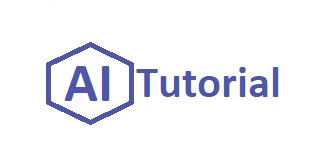A2A complements Anthropic’s Model Context Protocol (MCP) and leverages Google’s extensive experience in deploying large-scale agentic systems. It’s built to empower developers with a unified approach to creating interoperable AI agents that function seamlessly across varied platforms.
With A2A, organizations can deploy and manage AI agents that collaborate across multi-vendor and multi-cloud environments. The result: improved flexibility, vendor neutrality, and a step forward in making collaborative AI practical and scalable across the enterprise.
A2A is designed for the real-world behavior of agents, enabling them to collaborate even if they don’t share the same memory, tools, or context. Unlike traditional tool-based models, A2A empowers agents to interact in natural, unstructured modalities — unlocking the full potential of true multi-agent systems.
To ease adoption, A2A is constructed using well-established protocols like:
- HTTP
- Server-Sent Events (SSE)
- JSON-RPC
This makes it seamlessly integrable into existing enterprise IT stacks, without the need for custom infrastructure or vendor lock-in.
Enterprise trust and security are non-negotiable. That’s why A2A supports enterprise-grade authentication and authorization mechanisms from day one. It aligns with OpenAPI’s security schemes, giving businesses the confidence to deploy AI agents at scale without compromising data integrity or privacy.
A2A is built to support a range of task durations — from real-time queries to hours- or days-long research tasks, especially when human input is involved. Agents can provide:
- Live progress updates
- Notifications
- Status tracking
This ensures a consistent user experience, even for complex workflows.
The agentic future goes beyond text. A2A embraces multimodal communication, with built-in support for:
- Text
- Audio
- Video streaming
This broadens the range of interactions agents can handle, allowing them to participate in rich, dynamic enterprise workflows across diverse industries.
These principles position A2A as a future-ready, open protocol that supports the growing complexity and flexibility needed in modern enterprise AI deployments.
At its core, the Agent2Agent (A2A) protocol is designed to orchestrate seamless collaboration between AI agents. This is achieved through a structured but flexible communication flow between a “client agent” and a “remote agent,” each with distinct responsibilities.
- Client Agent: Initiates and formulates tasks based on user requests.
- Remote Agent: Acts on those tasks and provides responses, actions, or content.
This separation of responsibilities mirrors human collaboration models, enabling agents to work asynchronously or in real time, depending on the nature of the task.
Each agent can publish its capabilities using an Agent Card — a structured JSON format that describes what the agent can do. This allows client agents to intelligently discover and select the right remote agent for a given task.
The heart of A2A is its task-based interaction model:
- A client agent sends a “task” object to the remote agent.
- The task has a lifecycle — it can be fulfilled immediately or over time.
- The result of a task is called an artifact — such as a document, insight, or image.
- Agents can stay in sync via real-time updates and progress tracking.
Agents don’t just exchange tasks — they communicate using:
- Context messages
- Replies and instructions
- Artifacts and outputs
This conversational protocol allows agents to reason together, making collaboration more dynamic and productive.
Each message in A2A is made up of “parts” — self-contained content pieces (like images, text, or video). Agents use these to negotiate the optimal format for delivering results based on the user’s environment.
For example, a remote agent can adapt its response depending on whether the UI supports:
- 🖼️ Iframes
- 🎥 Video
- 📝 Web forms
- 📊 Interactive widgets
This ensures the end-user receives content in the most usable and compatible format available.
This sophisticated exchange mechanism makes A2A an ideal protocol for flexible, multi-modal, and multi-agent enterprise scenarios — without requiring all agents to live on the same platform or use the same tools.
👉 Explore the full technical details in the A2A draft specification.
